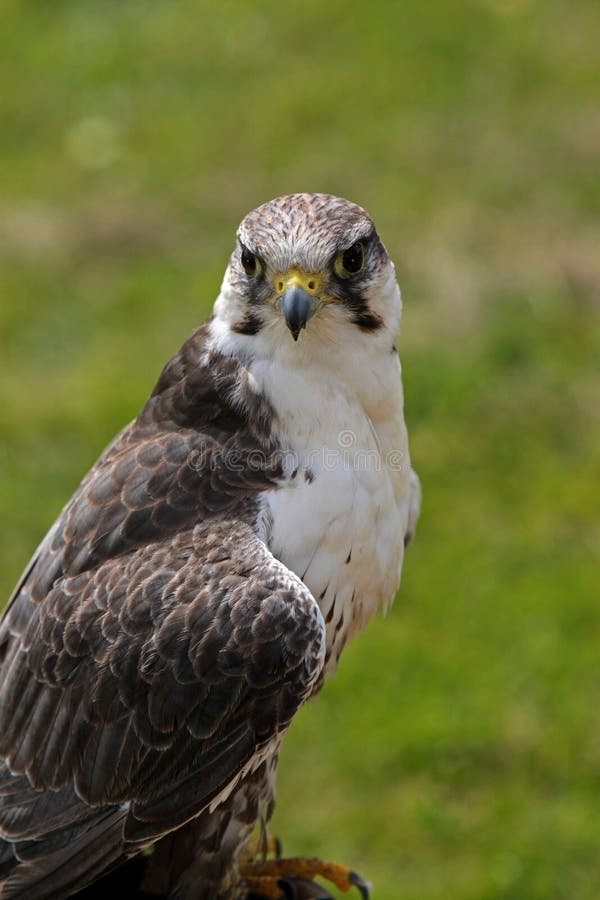
Both sexes may then engage in "ledge displays", centered on the area of their nest, or scrape. Individuals may also peep at each other, preen, nibble their mate's toes, or "bill" (gently grab the other bird's bill in their own). Eventually they sit at the nest ledge side by side. The development of a pair bond is first indicated by the male and female roosting near each other. Males display at nest ledges to attract females and advertise ownership to other falcons. Both males and females have a strong attachment to previous nesting sites, which may explain monogamy over multiple breeding seasons, rather than attachment between individuals. Peregrine falcons form monogamous pair bonds that often last throughout many breeding seasons. Young birds tend to be darker and browner, with streaked, rather than barred, underparts. They have white faces with a black stripe on each cheek and large, dark eyes. Peregrine falcons have slate and blue-gray wings, black bars on their backs and pale underbellies. They are typically 15-20% larger and 40-50% heavier than males. Like most birds of prey, female peregrine falcons are slightly larger than males. In North America they are roughly crow sized, ranging in length from between 36 and 49 cm in males and 45 to 58 cm in females. Like all falcons, peregrine falcons have long, tapered wings and a slim, short tail. They vary considerably in size and color. There are 19 regional variants (subspecies) of peregrine falcon worldwide. They have been observed breeding as high as 3600 meters elevation in the Rocky Mountains of North America. They have recently begun to colonize urban areas because tall buildings are suitable for nesting in this species, and because of the abundance of pigeons as prey items. They are most common in tundra and coastal areas and rare in sub-tropical and tropical habitats. Peregrine falcons prefer open habitats, such as grasslands, tundra, and meadows. They typically migrate along sea coasts, long lake shores, barrier islands, mountain ranges, or at sea. Northernmost populations breed in the tundra of Alaska and Canada, and migrate to central Argentina and Chile.

Peregrine falcons migrate long distances between breeding and winter ranges.

Most southern Palearctic and island populations of peregrine falcon are resident, and do not migrate. They are one of the most widespread terrestrial vertebrate species in the world. Peregrine falcons are found worldwide, except for rainforests and cold, dry Arctic regions.


 0 kommentar(er)
0 kommentar(er)
